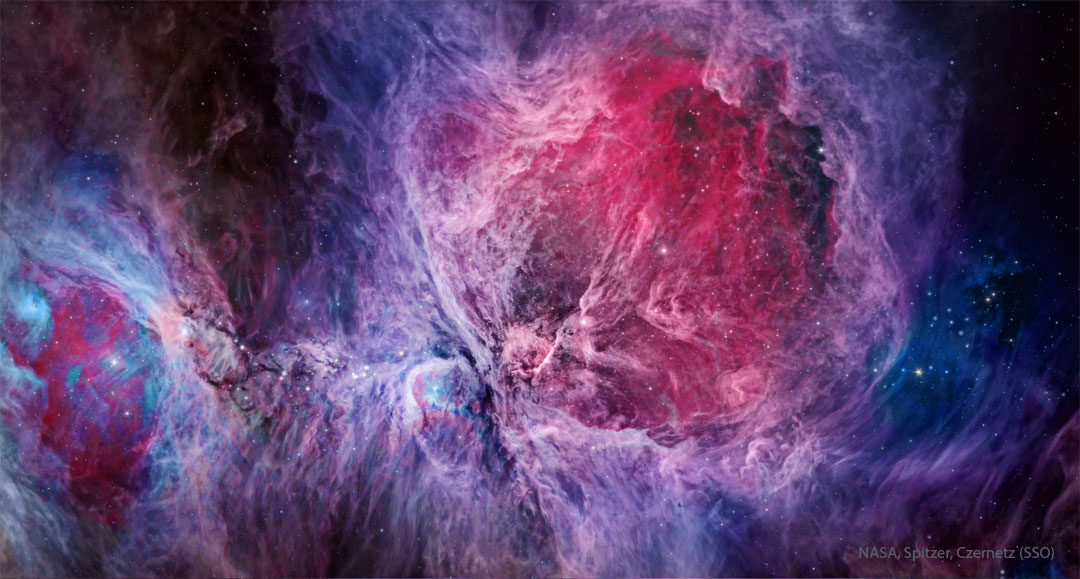APOD.pl: Astronomiczne zdjęcie dnia
Codziennie nowy obraz lub zdjęcie naszego fascynującego Wszechświata
wraz
z krótkim objaśnieniem napisanym przez zawodowego astronoma.
Zobacz więcej!
20 kwietnia 2025

Mgławica Oriona w świetle widzialnym i podczerwieni
Źródło i prawa autorskie:
podczerwień: NASA,
Teleskop Kosmiczny Spitzera (SST);
światło widzialne:
Oliver Czernetz,
Obserwatorium Siding Spring
Opis:
Wielka Mgławica Oriona jest niezwykle barwnym miejscem.
Oglądana okiem nieuzbrojonym wygląda niczym mała, zamglona
łatka w gwiazdozbiorze Oriona.
Zdjęcia wykonywane z długim czasem ekspozycji i na wielu różnych częstotliwościach, takie jak to tutaj, ukazują jednak
Mgławicę Oriona jako bardzo burzliwy obszar pełen młodych gwiazd, gorącego gazu
i ciemnego pyłu.
To cyfrowe złożenie uwzględnia nie tylko
trzy barwy
światła widzialnego, ale
i cztery pasma podczerwieni.
Zarejestrowano je przy pomocy należącego do NASA,
okrążającego Ziemię Kosmicznego Teleskopu Spitzera.
Za potęgę większej części
Mgławicy Oriona
(M42) odpowiada
Trapez - cztery widoczne w niej bardzo jasne gwiazdy.
Wiele ukazanych tu struktur w formie włókien
to w rzeczywistości fale uderzeniowe - fronty, gdzie
szybko poruszający się materiał napotyka na dużo wolniejszy gaz.
Mgławica Oriona rozciąga się na około 40 lat świetlnych i jest położona jakieś 1500 lat świetlnych stąd, w tym samym ramieniu spiralnym
naszej galaktyki co
Słońce.
Jutro: teleskop wielkości galaktyki
<
| Archiwum
| Nadsyłanie
| Lista tematyczna
| Search
| Kalendarz
| RSS
| Edukacja
| O APOD
| Forum
| >
Autorzy i wydawcy:
Robert Nemiroff
(MTU) &
Jerry Bonnell (UMCP)
Przedstawiciel NASA: Phillip Newman,
obowiązują określone prawa.
Polityka
prywatności sieci NASA oraz ważne uwagi
Serwis prowadzony przez:
ASD w
NASA /
GSFC
oraz Michigan Tech. U.
